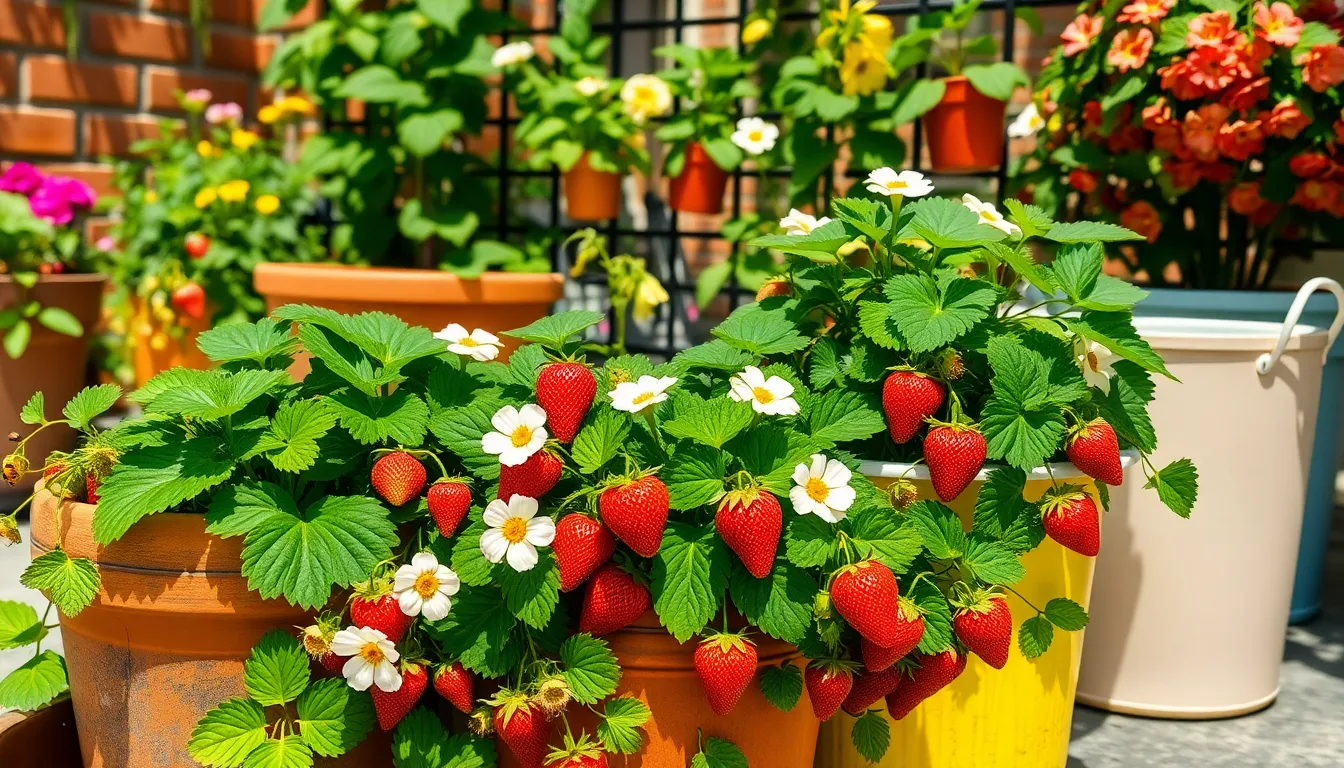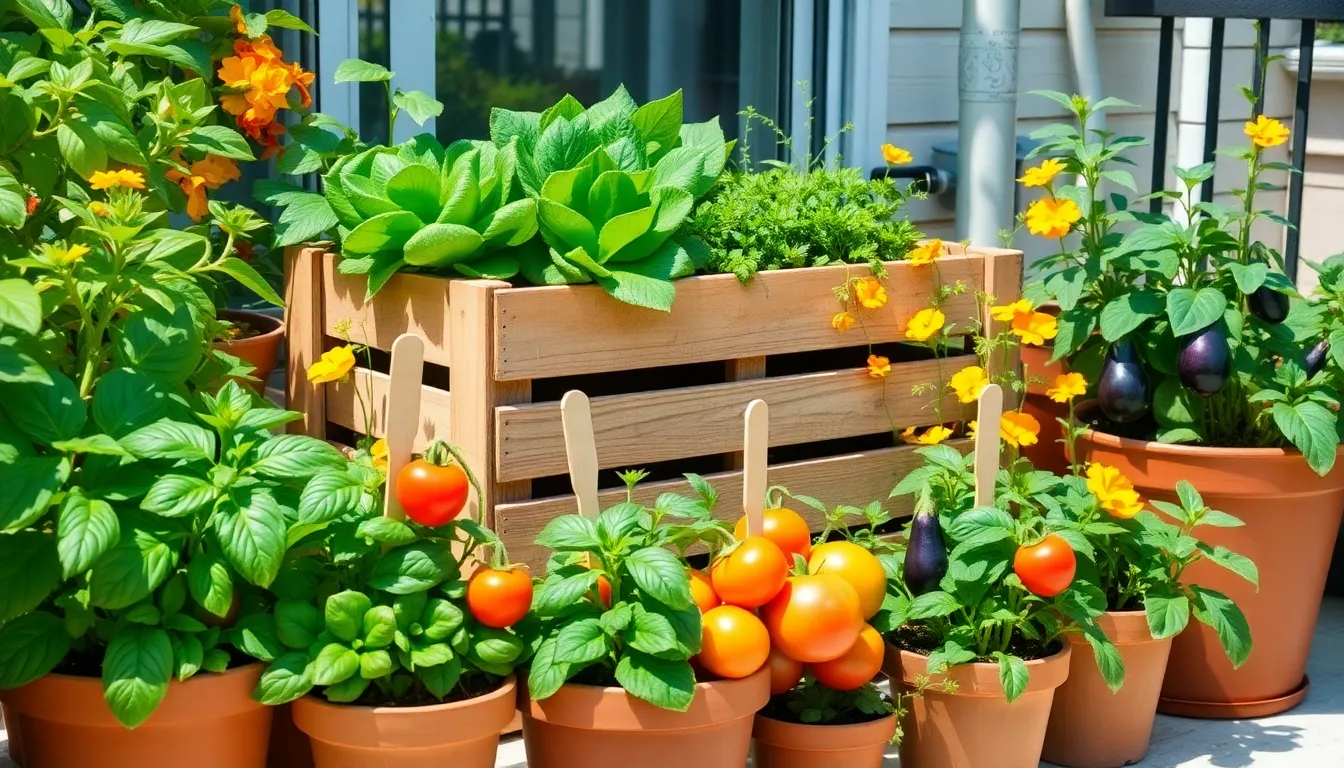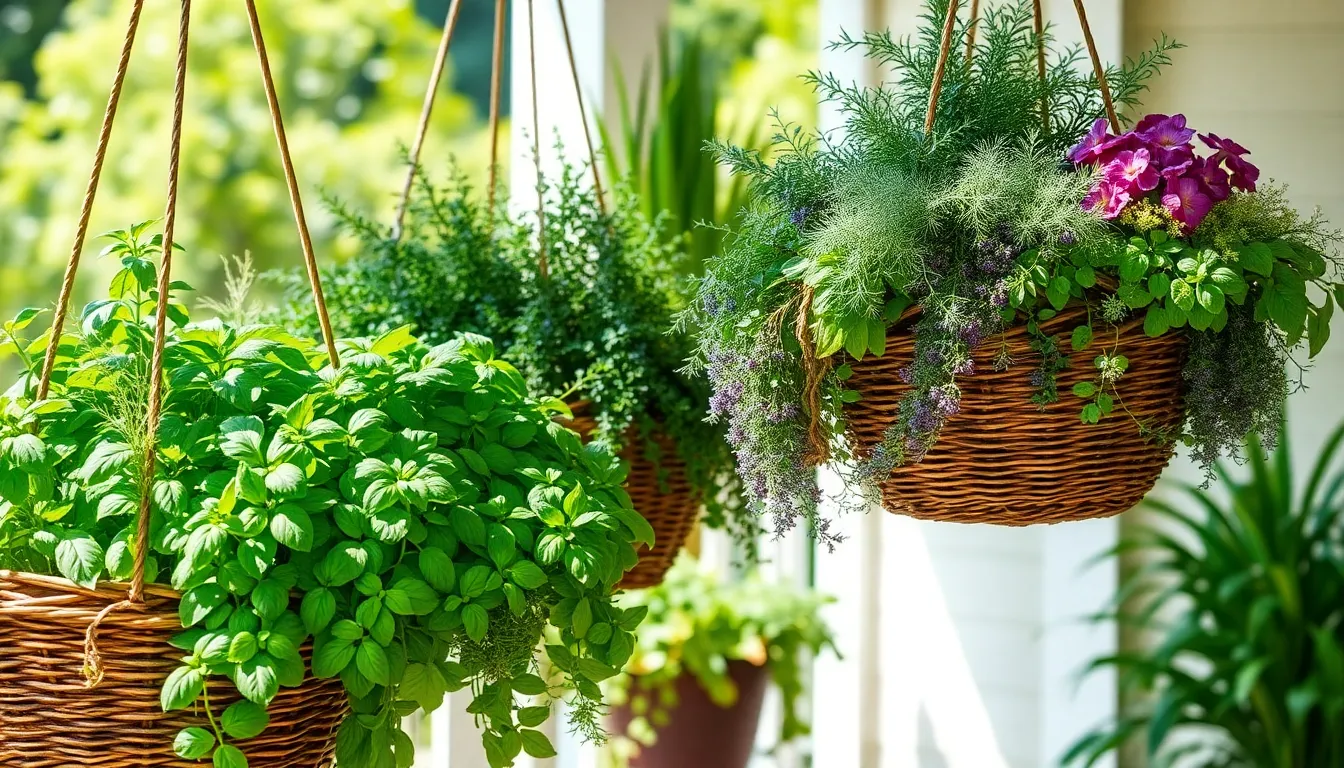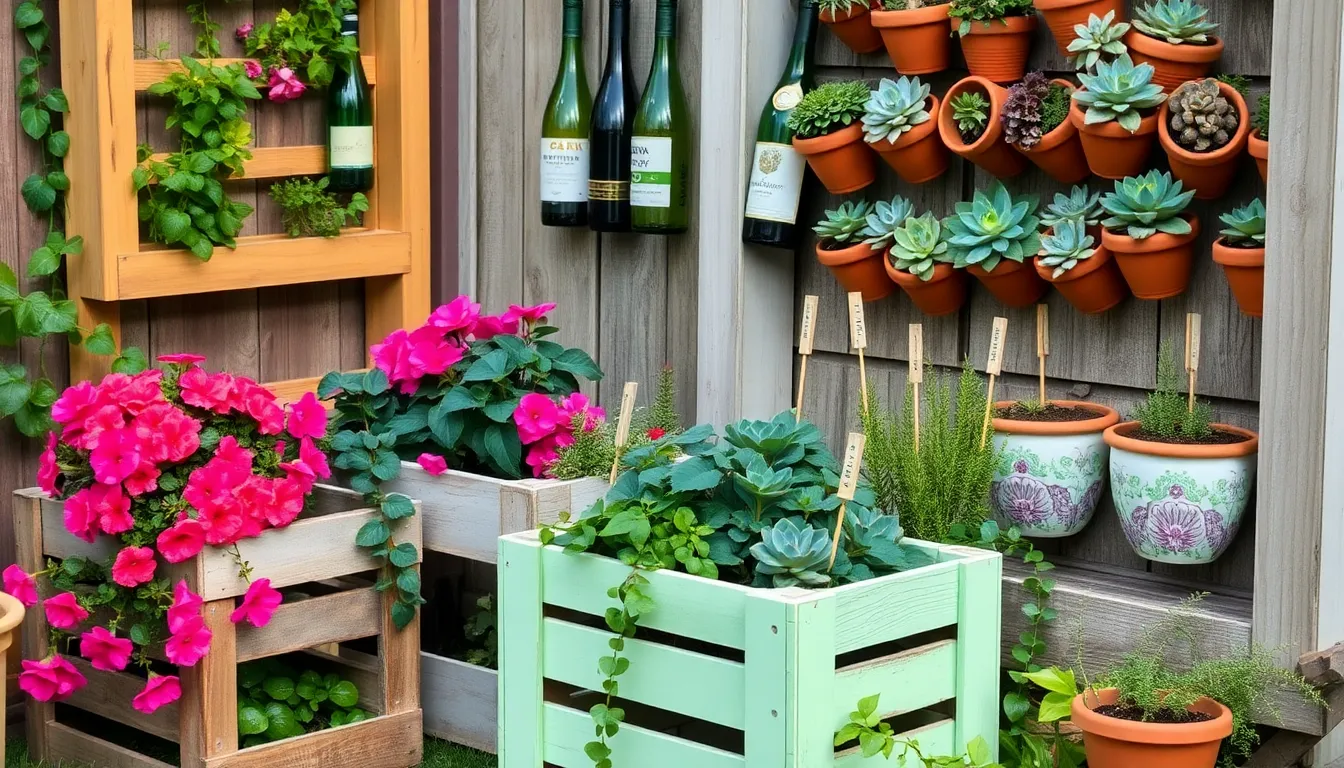There’s something undeniably delightful about plucking a sun-ripened strawberry right from your own garden. The good news is, you don’t need a sprawling backyard to enjoy this simple pleasure—container gardening offers a fantastic opportunity to grow strawberries even if space is at a premium. For those just starting out, cultivating strawberries in containers can be a rewarding introduction to the joys of gardening. Meanwhile, seasoned green thumbs will appreciate the flexibility and creativity this method allows, offering the chance to experiment with different varieties and container styles.
Strawberries are not just sweet treats; they also represent a perfect mix of beauty, taste, and practicality in a compact form. In this article, you’ll discover how to select the best strawberry varieties for container growth, learn about the ideal soil mix, and master the art of watering and feeding your plants. We’ll guide you through the process of choosing the right containers, positioning them for optimal sunlight, and troubleshooting common issues like pests and diseases. Whether you’re looking to fill a sunny balcony with vibrant greenery or want to introduce your children to the wonders of growing their own food, container gardening with strawberries is an accessible and rewarding endeavor for any gardener.
Select Suitable Strawberry Varieties
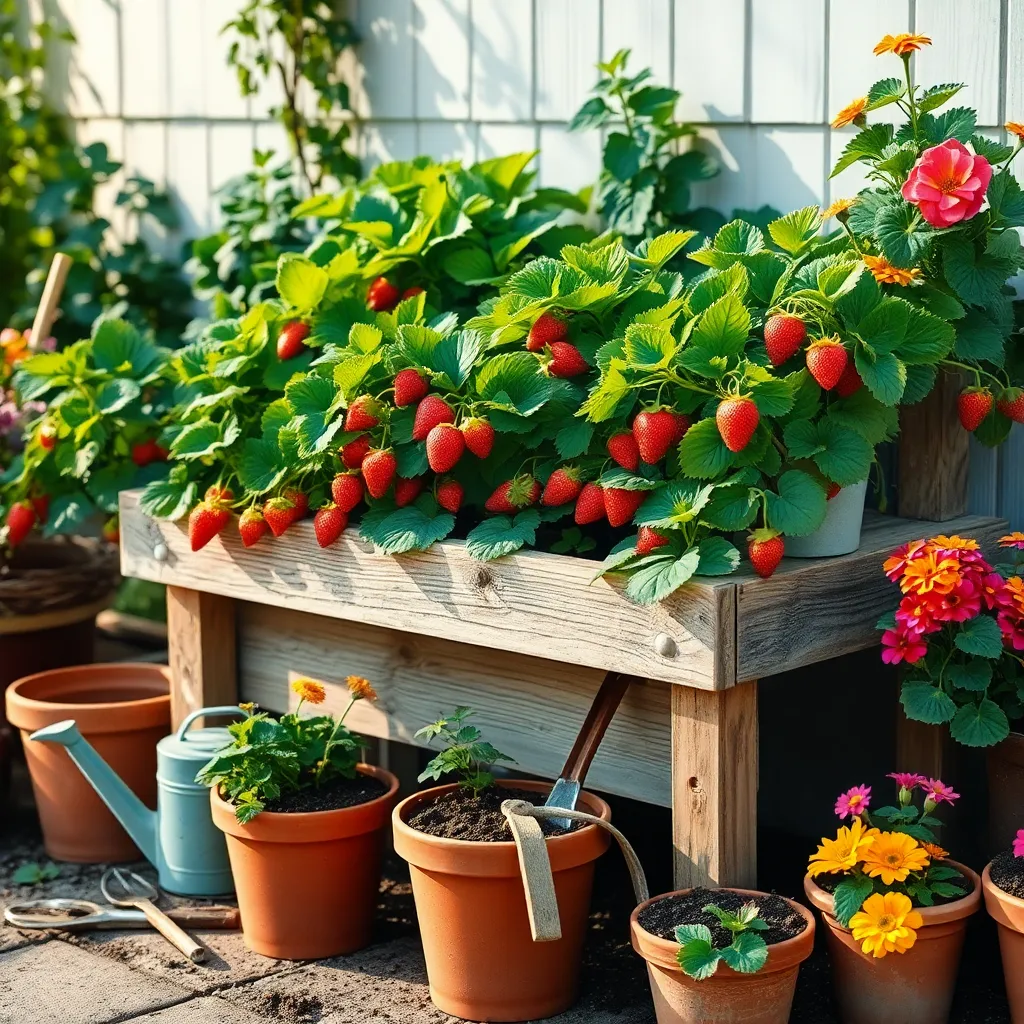
When selecting strawberry varieties for container gardening, it’s essential to consider the growth habits and fruiting cycles of each type. Everbearing varieties like ‘Albion’ and ‘Seascape’ produce fruit several times a season, making them an excellent choice for continuous harvest.
For beginners, day-neutral varieties, such as ‘Tristar’ and ‘Tribute’, are ideal as they bear fruit throughout the summer, regardless of daylight length. These varieties thrive in containers, requiring well-draining soil and consistent watering to keep the soil moist but not soggy.
Experienced gardeners might want to experiment with alpine strawberries, which offer smaller but intensely flavorful fruits. These can be a delightful choice for containers, as they adapt well to various conditions and require less space compared to traditional strawberries.
Ensure your containers have good drainage; strawberries do not like overly wet roots. A mix of peat moss, perlite, and high-quality potting soil will provide the right balance of nutrients and aeration for healthy plant growth.
Prepare Quality Potting Mix
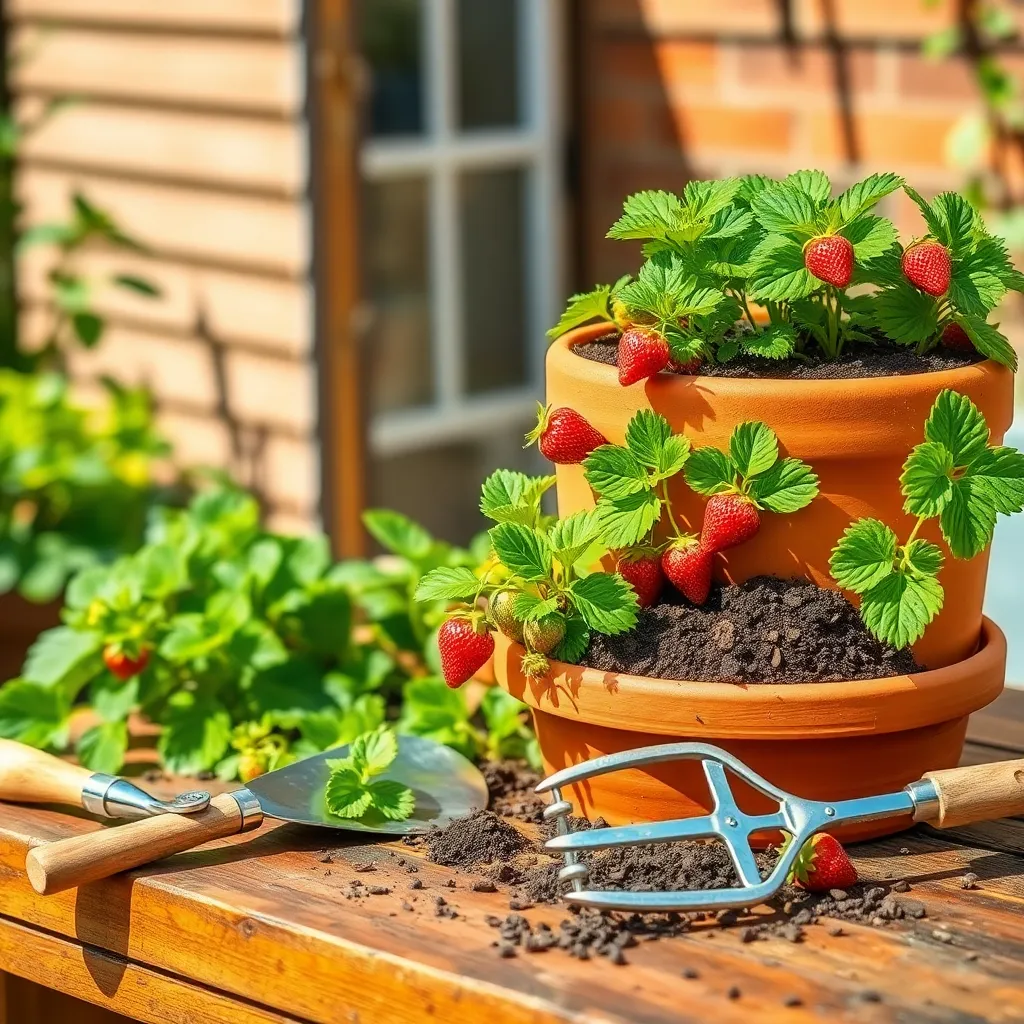
To successfully grow strawberries in containers, starting with a quality potting mix is crucial. A well-prepared potting mix ensures that your strawberry plants receive the nutrients, drainage, and aeration they need to thrive.
Begin by choosing a potting mix that is lightweight yet rich in organic matter. Look for a mix that contains ingredients like peat moss or coconut coir, which help retain moisture while still allowing excess water to drain away.
Incorporating perlite or vermiculite into your potting mix can improve aeration and drainage, preventing root rot. These materials create air pockets within the soil, allowing roots to breathe and promoting healthy growth.
For an added nutrient boost, consider mixing in some well-aged compost or worm castings. This will provide a slow release of nutrients over time, ensuring your strawberry plants have a continuous supply of food.
Choose Appropriate Container Size
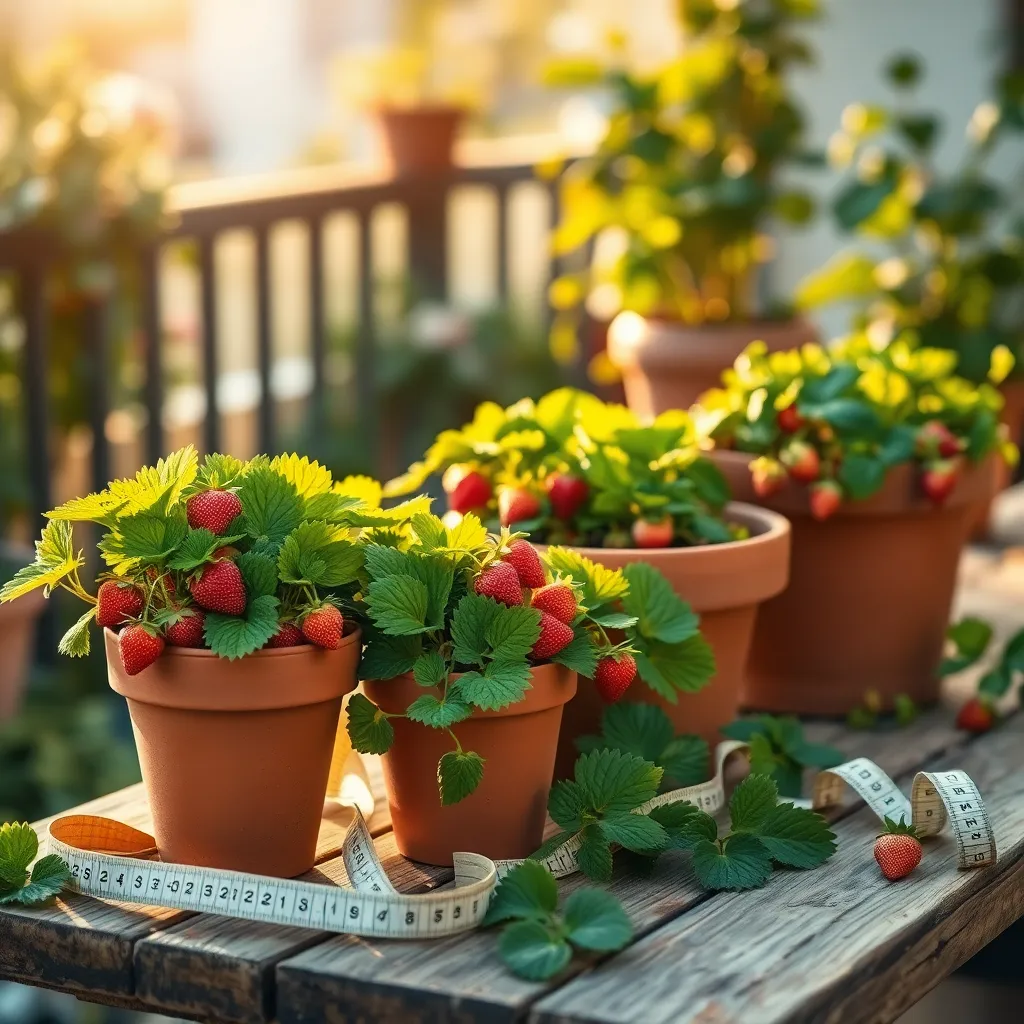
When choosing a container for your strawberries, size is an essential consideration for healthy plant growth. Strawberries require ample space for their roots to spread, ensuring they have access to enough nutrients and water.
For individual strawberry plants, a container with a minimum diameter of 12 to 14 inches is recommended. This size allows for proper root development and helps prevent overcrowding, which can lead to disease.
Consider using larger containers or planters if you plan to grow multiple plants together. Ensure there’s at least 8 inches of space between each plant to allow for adequate airflow and reduce the risk of fungal issues.
Opt for containers with good drainage to prevent waterlogging, which strawberries are particularly sensitive to. Look for pots with several drainage holes to ensure excess water can easily escape, keeping the roots healthy.
Plant Strawberries Correctly
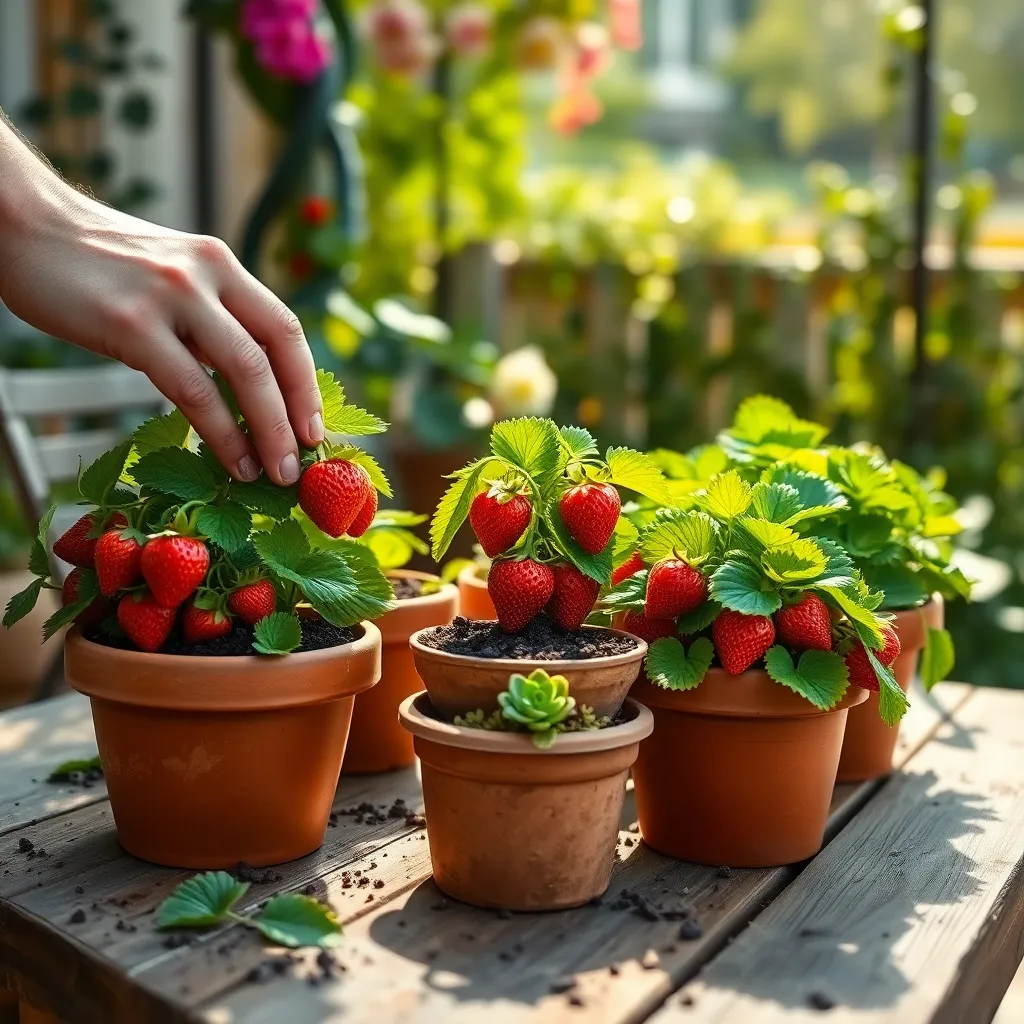
When planting strawberries in containers, start by filling the pot with a high-quality potting mix enriched with organic matter. Ensure excellent drainage by mixing in materials like perlite or vermiculite to prevent waterlogging.
Position each strawberry plant so that the crown, where the leaves meet the roots, sits just above the soil line. Burying the crown too deep can lead to rot, while planting it too high may dry out the roots.
Space multiple strawberry plants in a single container approximately 10 to 12 inches apart to allow ample room for growth. This spacing ensures that each plant receives adequate sunlight and airflow, reducing the risk of fungal diseases.
Water newly planted strawberries thoroughly to help settle the soil and eliminate air pockets around the roots. In general, strawberries require about 1 to 1.5 inches of water per week, so be sure to check the soil moisture regularly.
Water and Fertilize Consistently

Strawberries in containers require consistent watering to thrive, as their shallow roots can dry out quickly. It’s essential to water them deeply about twice a week, or more frequently in hot, dry weather, ensuring the soil is kept moist but not waterlogged.
To maintain optimal soil moisture, consider using a potting mix that includes materials like coconut coir or perlite, which help retain moisture. Additionally, mulching the soil surface with straw or pine needles can help reduce evaporation, keeping your plants hydrated longer.
Fertilizing is equally important to ensure your strawberry plants receive the nutrients they need for vibrant growth and fruit production. Use a balanced, slow-release fertilizer or a liquid fertilizer high in potassium, applying it every 4-6 weeks during the growing season.
For those seeking to maximize fruit yield, consider incorporating a monthly seaweed or fish emulsion feed, which provides trace minerals and promotes healthy root development. Remember, over-fertilizing can lead to lush foliage at the expense of fruit, so balance is key.
Conclusion: Growing Success with These Plants
In conclusion, nurturing a thriving relationship—much like growing strawberries in containers—requires a deep understanding of several key principles: choosing the right environment, providing consistent care, ensuring healthy communication (or soil), addressing challenges promptly, and celebrating small victories. Each of these concepts serves as a cornerstone for cultivating a bond that flourishes over time. As you embark on this journey, take a moment today to assess the “soil” of your relationship: what needs more attention, and what is already thriving?
To support your ongoing growth, save this article as a handy guide you’ll want to revisit. You’ll find that just as strawberries need the right conditions to grow, your relationship can blossom with intentional effort and a nurturing touch.
Remember, the path to a successful relationship is paved with small, consistent actions. By tending to your bond with care and dedication, you are investing in a future filled with love and fulfillment. Bookmark this article now, and let it be a source of inspiration and guidance as you continue to cultivate a flourishing partnership. Your commitment today sows the seeds of tomorrow’s relationship success.

